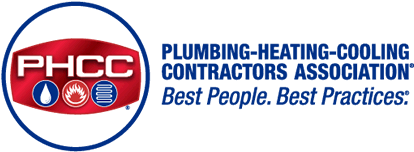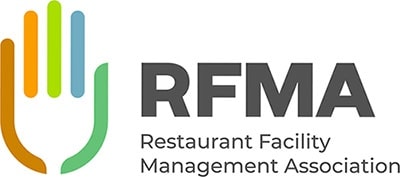The Role of Calcium Carbonate and the Preventive Solution of ScaleRx®
Limescale formation in plumbing systems, particularly those involving copper piping, is a prevalent problem with far-reaching consequences in industrial settings. This article delves into the intricate mechanisms by which calcium carbonate, the primary component of limescale, instigates corrosion in copper pipes, and how ScaleRx, American Valve’s innovative limescale inhibitor, effectively prevents this process.
The Genesis of Limescale and Its Composition
Hard water is found in almost 90% of industrial plants across the United States. Limescale, primarily composed of calcium carbonate (CaCO3), is the result of hard water, where high levels of calcium and bicarbonate ions are present. Heating this water initiates a thermal decomposition process, converting bicarbonate ions to carbonate ions. These then react with calcium ions, forming calcium carbonate. This reaction predominantly occurs in hot water environments, placing your water heater and copper plumbing pipes at increased risk.
Mechanisms of Limescale-Induced Copper Pipe Corrosion
Physical Blockage and Water Flow Disruption
Limescale deposits can narrow the inner diameter of copper pipes, leading to increased water velocity. This phenomenon exacerbates the wear and erosion of the pipe’s interior, hastening its deterioration.
Creation of Differential Aeration Cells
These cells form under limescale deposits, creating areas with lower oxygen concentration. Here, the covered copper surface becomes anodic, while the exposed areas act as cathodes. This differential accelerates localized corrosion, contributing to the weakening of the pipe walls.
Galvanic Corrosion
The interaction between calcium carbonate and copper sets up a galvanic couple, with copper as the anode and calcium carbonate as the cathode. This accelerates copper pipe corrosion, leading to significant material loss over time.
Concentration of Corrosive Agents
Limescale can trap aggressive agents, like chlorides, directly against the surface of the copper tube. These concentrated agents cause copper pitting corrosion, characterized by small but deep pits that significantly compromise pipe integrity.
Thermal Insulation and Stress
Limescale’s insulating properties lead to uneven heating and cooling of copper pipes. These temperature fluctuations induce thermal stress, further contributing to the corrosion process.
MIC and Erosion Corrosion
Limescale can harbor bacteria, including sulfate-reducing bacteria, which can lead to microbiologically influenced corrosion (MIC). These bacteria can create corrosive by-products and further accelerate the corrosion process. Further, limescale buildup reduces the diameter of pipes, restricting flow and decreasing system efficiency. This can increase the velocity of the water in certain areas, leading to increased erosion corrosion.
Detailed Analysis of Corrosive Processes
The corrosive interaction between limescale and copper pipes involves complex chemical and physical dynamics. The interaction begins at the molecular level, where calcium carbonate molecules adhere to the pipe surface, initiating a series of corrosive reactions. Over time, these reactions lead to the formation of pinhole leaks, which in turn can lead to pipe failure.
The Impact of Water Chemistry on Limescale Formation
Water chemistry plays a pivotal role in limescale formation. Factors such as pH, temperature, and the presence of other ions like magnesium can influence the rate and extent of calcium carbonate deposition. Higher temperatures accelerate limescale formation, making hot water systems more vulnerable.
Pinhole Leaks: The Ultimate Consequence
Pinhole leaks are not just minor inconveniences; they signify a severe degradation of the pipe’s structural integrity. A pinhole leak caused by copper pipe corrosion can lead to extensive water damage, promote mold growth, and necessitate costly repairs and replacements. Moreover, the presence of leaks can compromise the entire plumbing system’s efficiency and reliability.
ScaleRx: An Innovative, Labor-Free Limescale Solution
ScaleRx employs a cutting-edge approach to prevent limescale formation. By disrupting the crystallization process of calcium carbonate, ScaleRx effectively mitigates the risks associated with limescale and has been shown in independent IAPMO R&T testing to be 76% effective at corrosion prevention.
Purchase ScaleRX for your facility today.
How ScaleRx Technology Works
- Crystal Formation Disruption: ScaleRx’s TGP technology alters the typical crystal formation pathway of calcium carbonate, preventing hard and adherent limescale from forming.
- Elimination of Differential Aeration Cells: By preventing limescale deposits, ScaleRx eradicates the formation of differential aeration cells, thereby mitigating localized corrosion.
- Reduction in Galvanic Corrosion: The system minimizes the galvanic interaction between calcium carbonate and copper, thereby protecting the pipe from accelerated corrosion.
- Decreased Concentration of Corrosive Agents: The absence of limescale means corrosive agents cannot concentrate against the pipe surface, reducing the risk of pitting corrosion.
- Minimized Thermal Stress: ScaleRx ensures even heating and cooling of pipe surfaces, reducing thermal stress and its contributory effect on corrosion.
The ScaleRx Advantage
Adopting ScaleRx not only extends the lifespan of copper pipes but also enhances the overall efficiency and reliability of the plumbing system. By preventing limescale formation, ScaleRx offers a proactive approach to maintaining pipe health, preventing leaks, and avoiding the snowball effects of water damage and plumbing system inefficiencies.
The Cost of Corrosion in Industrial Plants
The cost of corrosion is a major problem for industrial facilities managers and plant employees. Beyond the direct costs associated with corrosion, there are a number of indirect costs that are cause for concern.
Direct Costs of Corrosion
- Equipment Damage and Failure: Corrosion leads to the deterioration and weakening of metal parts in machinery and infrastructure. This can result in equipment failures, which means costly repairs or replacements, plus unplanned downtime.
- Reduced Efficiency: Corroded machinery and components operate less efficiently. For instance, corrosion in pipes leads to blockages or reduced flow, impacting the efficiency of fluid transport systems, water pressure, and your piping system as a whole.
- Increased Maintenance Costs: For corrosion prevention without the use of ScaleRx, industrial plants must invest in regular corrosion management. This includes the cost of materials, labor, and any downtime required to perform maintenance or repairs.
- Shortened Equipment Lifespan: Equipment and components that are regularly exposed to corrosive conditions tend to have a shorter lifespan, requiring more frequent replacement.
- Increased Energy Consumption: Corroded equipment, like water heaters, often require more energy to operate at normal levels, leading to increased energy costs.
Indirect Costs of Corrosion
- Safety Risks: Corrosion can compromise the structural integrity of equipment and facilities, leading to potentially hazardous conditions for workers. Structures weakened by corrosion may be at risk of collapse.
- Product Quality Issues: In processes where corrosion particles can contaminate the product (such as in food and beverage processing), there’s a risk of reduced product quality, which can impact customer satisfaction and your business’ reputation.
- Environmental and Regulatory Concerns: Corrosion can lead to environmental pollution, such as leaks into the surrounding environment. This not only poses ecological risks but can also lead to expensive regulatory fines and legal issues.
Save Money with ScaleRx
Both direct and indirect costs of corrosion can be avoided almost entirely by implementing ScaleRx in your industrial plant. ScaleRx is the cost-effective answer to your hard water problems. Unlike a labor-intensive water softening system, ScaleRx effectively prevents the formation of hard mineral deposits without chemically altering or removing mineral content from water.
Additionally, side-by-side comparison testing reveals ScaleRx was 4 times more effective for corrosion prevention than the leading electronic scale reduction device. Save yourself time, money, and the hassle of dealing with scale buildup. Install ScaleRx today.
American Valve’s Scale Solutions
The corrosive effects of limescale, primarily composed of calcium carbonate, pose a significant threat to the integrity of copper pipes. ScaleRx is a highly effective tool for preventing copper pipe corrosion in your industrial plant.
Implementing ScaleRx is a crucial step in safeguarding plumbing systems from the detrimental effects of limescale-induced corrosion, thereby ensuring their longevity and reliability. To learn more about American Valve’s innovative solutions, contact our knowledgeable representatives today.





